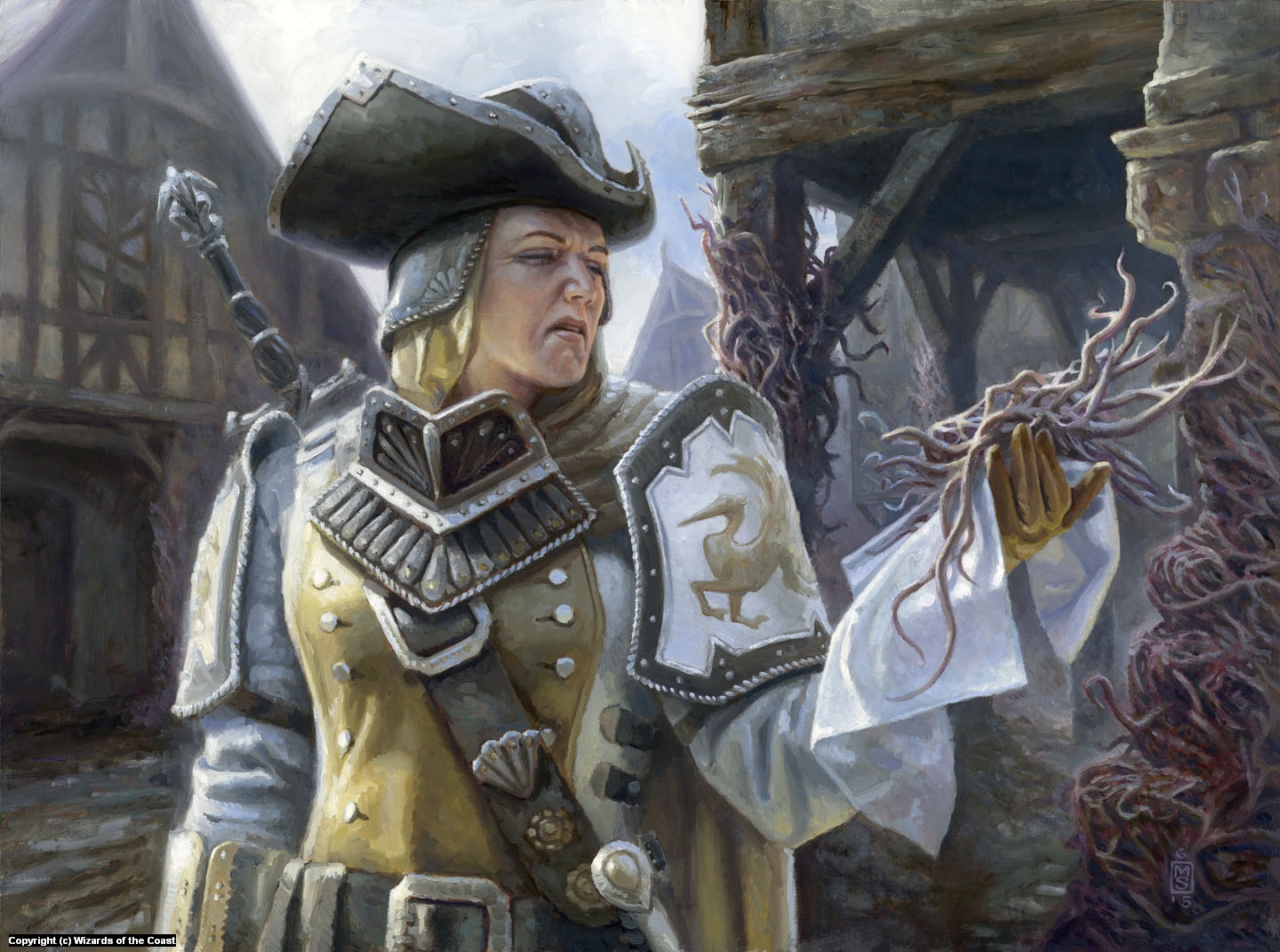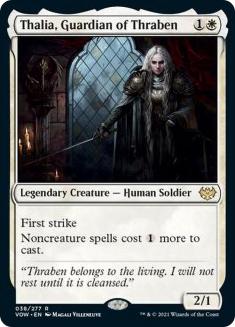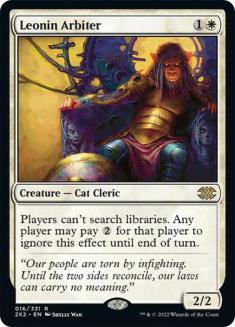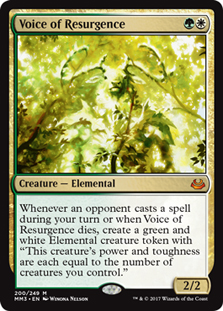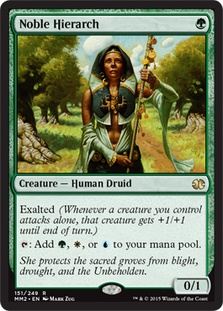…in this world nothing can be said to be certain, except death and taxes.
Benjamin Franklin, 1789
It took over 200 years, but I think we can add a third thing to the list, Ben…
Companion was already the most-hyped aspect of Ikoria and Lurrus of the Dream-Den led the way in a dominating first weekend for the cycle which saw companion cards take down tournaments across every major Constructed format save for Pauper, where they of course aren’t legal. Lurrus itself could be seen recurring everything from Priest of Forgotten Gods to Black Lotus and is now being shoehorned into a variety of different archetypes from Burn to Jund.
While I expect a small subset of the Lurrus decks to rise above the rest, it’s clear that the coming weeks are going to be about evaluating the card’s effect on the metagame and adjusting appropriately. That impact is most clearly felt in Modern, where a variety of archetypes and strategies can be tuned to play Lurrus, combat Lurrus, or both, so that will be my focus today.
Lurrus Is an Eighth Card…and a Card Advantage Engine
Much has been made of companions offering an extra card, and that’s certainly what makes them so powerful, but Lurrus has risen above the rest because it’s also an efficient way to generate card advantage when paired with the likes of Mishra’s Bauble and Seal of Fire. The result is a metagame where extra cards are easy to come by.
In such a metagame, there are two main approaches you can take. First, you can position yourself to dominate attrition games, which you can see in the following Jund list from last weekend’s Modern Challenge:
Creatures (10)
Planeswalkers (2)
Lands (22)
Spells (26)

In addition to incorporating Lurrus, this list is playing three copies of Kolaghan’s Command, a card that excels in attrition matchups, particularly those involving Lurrus, since it both kills opposing copies of the Cat and recurs yours. This is an interesting arms race because you can’t turn to overtly powerful cards that cost more than two mana to act as trumps unless you want to lose access to your companion. Kroxa is likely one of the more powerful options at such a low mana cost, since it trumps other creatures on the battlefield and can be cast many times over the course of a long game, so Lurrus Jund looks to be a solid option moving forward.
The other approach you can take is to ignore the attrition fight and instead make the game about something else. These decks can still play Lurrus in order to provide resilience to opposing disruption, but aren’t interested in playing a super-long game against the likes of Jund. This is the approach you’re seeing with Lurrus Burn as well as decks like Devoted Devastation, which are capable of converting their resources into a literal win even if they’re behind on material. Lurrus fits easily into those strategies and lets them play through early removal, historically the key to beating them.
In fact, Lurrus functions best in strategies like this because it provides a secondary angle of attack. Most decks would like to cut on their card advantage sources for more early interaction in order to consistently stop fast kills, but such a plan can easily run afoul of Lurrus. And if they pace their disruption in order to prepare for the threat of Lurrus, they could easily die to an early Devoted Druid with protection.
But there’s a second axis on which this battle can be fought. Burn and Devoted Druid are aiming to end the game directly, but you can sidestep attrition fights indirectly by accruing a large enough tempo advantage. The goal here is to end the game via fair, interactive means before the opponent has time to deploy all their spells, thus eliminating any advantage their Lurrus might gain.
When it comes to tempo in Modern, you can’t rely on counterspells because they simply aren’t good enough, so you need to attack your opponent’s mana. When it comes to that, it’s all about the dynamic duo of Thalia, Guardian of Thraben and Leonin Arbiter.
These creatures have teamed up in Death and Taxes decks in Modern for years now, and conveniently, both play well with Lurrus. The recent addition of Giver of Runes helps keep these creatures around to make life difficult on your opponents while also protecting Lurrus itself. You do have to sacrifice the top-end of the curve in Flickerwisp and Thought-Knot Seer but I think Lurrus is worthwhile.
Because Leonin Arbiter prohibits you from playing fetchlands, Death and Taxes usually has to keep its mana simple, so I started with a Mono-White build:
Creatures (30)
- 4 Leonin Arbiter
- 4 Champion of the Parish
- 4 Thalia, Guardian of Thraben
- 2 Kytheon, Hero of Akros
- 4 Thraben Inspector
- 4 Thalia's Lieutenant
- 2 Tithe Taker
- 4 Giver of Runes
- 2 Charming Prince
Lands (21)
Spells (9)

You could try cards like Dryad Militant or a splash for Tidehollow Sculler if you don’t want the Human payoffs, but with only Giver of Runes and Leonin Arbiter as non-Humans I think having the added boosts for your creatures is worthwhile, both to compete better in combat and to pressure your opponents so the game ends before they draw out of the mana screw you impose on them.
You have to stretch pretty far to find creatures that fit the cost restriction of Lurrus and the tribal subtheme, but they all play a role in the deck. Charming Prince is solid with Aether Vial to protect your creatures or double up on Thalia’s Lieutenant. Tithe Taker helps you against sweepers while also taxing your opponent’s mana further, forcing them to play into your Aether Vial tricks more often. Lastly, I’ve played Kytheon, Hero of Akros in Five-Color Humans before because an early planeswalker can be devastating.
One of the losses in going to a Lurrus shell is the flyers the deck used to have. Flickerwisp and potentially Restoration Angel were great at closing games when your relatively small ground creatures were brick-walled. A non-Humans list could incorporate cards like Selfless Spirit and Serra Avenger but I think the Human synergies are important. I’ve included a singleton Brave the Elements to break through stalled battlefields. It’s a powerful enough card to include more copies, but you also need to keep the creature density high, so there’s some tension there and you need to find the right balance when tuning.
I’m concerned about only having Path to Exile as removal, though Path’s stock goes up in a Lurrus world since there’s a premium on bypassing the graveyard. When you stick to one color you gain access to On Thin Ice, which can be recast with Lurrus against Abrupt Decay and the like. I’m also including plenty of copies of Phyrexian Revoker since it plays well against Devoted Druid and any deck trying to rely too heavily on Arcum’s Astrolabe and Mishra’s Bauble.
The Hushbringers are a nod to Five-Color Humans, which on paper is a bad matchup since their creatures outclass yours and Aether Vial helps them get around your mana denial plan. Lastly, the switch from Rest in Peace to Tormod’s Crypt is an acknowledgement of the fact that Rest in Peace messes with your Lurrus while Tormod’s Crypt plays incredibly well with it, letting you use it early to stymie Dredge with the knowledge that you can recast it on Turn 3.
The sideboard is designed to tackle decks that can cheat effectively on mana, like Dredge, or win very quickly, especially with mana creatures. If you’re not able to get underneath a heavy removal strategy you will likely struggle to come back, so I wanted to look at another build of the deck that has more built-in resilience to removal. For that I turned to green:
Creatures (30)
- 4 Noble Hierarch
- 4 Leonin Arbiter
- 2 Scavenging Ooze
- 4 Thalia, Guardian of Thraben
- 4 Voice of Resurgence
- 4 Thraben Inspector
- 2 Selfless Spirit
- 4 Giver of Runes
- 2 Hexdrinker
Lands (22)
Spells (8)

In terms of resilience to removal, the major gain here is Voice of Resurgence. It hasn’t seen much play in recent years, but it plays well in a Lurrus world where you want to squeeze every bit of value out of your cheap cards. There are also still plenty of Archmage’s Charm / Cryptic Command decks ready to hand you free Elemental tokens to counter your spells.
Beyond Voice, the green splash provides a significant increase in the individual power level of your cards. Scavenging Ooze and Hexdrinker can dominate a battlefield if the game drags on while still being effective early, especially Ooze disrupting opposing Lurruses. Having a more powerful supporting cast makes it harder to save removal for the disruptive creatures and will help this version contend against the Tarmogoyfs of the world.
But the most important addition is Noble Hierarch. Mana creatures are a classic way to gain tempo and Noble Hierarch, even with no three-drops to curve into, is one of the best. Double-spelling on Turn 2 or casting Leonin Arbiter with Ghost Quarter ready to enter Strip Mine mode is a great opening that can bury your opponent very quickly.
The mana here is awkward with the mediocre multicolor lands but it’s perfectly workable. Relative to the Mono-White list, you lose On Thin Ice, but in the sideboard you gain access to Gaddock Teeg and Veil of Summer, and Winds of Abandon is a serviceable replacement that still exiles and will occasionally blow battlefields wide open. At least your opponent’s side of them, that is.
What About Humans?
The major question to answer for any Death and Taxes deck is why it should be played over Five-Color Humans. That deck is a more proven commodity in Modern and certainly more powerful in a pre-Lurrus world. But adding Lurrus to that shell is a lot trickier than in Death and Taxes. You have to sacrifice Mantis Rider, often the deck’s closer, and Reflector Mage, its primary means of interacting with creatures since the deck can’t cast Path to Exile reliably.
On top of that, casting a non-Human with two colored mana symbols is no easy task. You’d likely have to forgo the Waterlogged Grove for Nurturing Peatland and the basic Island for Seachrome Coast and it would still be an uneasy sell with Unclaimed Territory and Cavern of Souls needing to name Human frequently and sometimes Illusion for Phantasmal Image.
Noble Hierarch can pull some weight there, but with your Lurrus face up, your opponents will know to target it if that will likely keep you off the mana to cast such a powerful card. Over the weekend, I saw Humans lists playing Jegantha, the Wellspring as their companion since the maindeck already meets its companion requirement, but that’s a huge downgrade from Lurrus.
It’s not clear that Lurrus is enough to compensate for the existing delta between the two decks, but with Lurrus succeeding across literally every format, there’s enough incentive to find out. Taxes decks have been solidly Tier 2/3 in Modern for years, but those decks are always one great addition or favorable metagame shift away from competing at the highest levels. Lurrus provides both of these for Death and Taxes.
The rabble-rousing masses are already gathering their pitchforks and coming for Lurrus, and the expectation is that the card isn’t long for most formats. If you’re a fan of Death and Taxes, the time to capitalize is now.
Move over, death. It’s a Lurrus world now.

